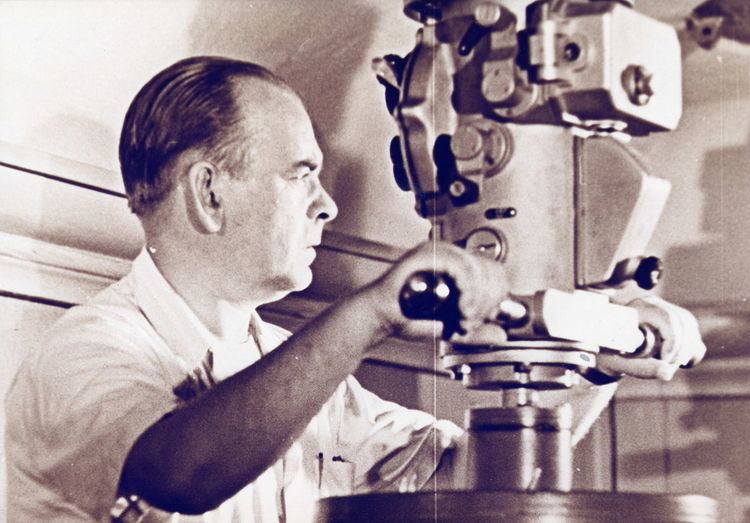Name Leonid Voskresenskiy | ||
 | ||
Born June 14, 1913 ( 1913-06-14 ) Pavlovsky Posad, Russia Died December 14, 1965(1965-12-14) (aged 52)
Moscow, Russia Occupation Soviet rocket scientist and engineer Known for Deputy Chief Designer of Soviet Space Program | ||
Leonid Alexandrovich Voskresenskiy (Russian: Леонид Александрович Воскресенский, June 14, 1913 – December 14, 1965) was a Soviet rocket engineer and long-time associate of famed Chief Designer Sergei Korolev. He served as launch director for Sputnik and for the first manned space flight, Vostok 1. The lunar crater Voskresenskiy is named in his honor.
Contents
Biography
This section incorporates information from the equivalent article on the Russian Wikipedia.Voskresenskiy was born on June 14, 1913 in the town of Pavlovsky Posad. His mother was Catherine Veniaminovna Sokolov (1880-1956); his father, Alexander G. Voskresenskiy (1875-1950), was a priest at St. Nicholas Church in Pavlovsky Posad and later was the senior priest at the Church of St. John the Warrior in Moscow.
From 1929 to 1936 he worked as an electrician while also studying at Moscow Power Engineering Institute. In 1936 he was drafted into the army, where he served as an engineer.
In 1945, he was sent to Germany with a team that was trying to identify engineers and German rocket equipment, such as the A-4 and the V-2. In 1946, he led the Vystral group, which performed test flights of the V-2 rockets, at the Soviet missile institute in Nordhausen, Germany.
Voskresenskiy continued to head several rocket test programs until 1953, when he was appointed as a Deputy Chief Designer of the primary Soviet rocket design bureau, OKB-1, under Sergei Korolev. During his tenure at OKB-1, the bureau achieved several significant achievements in rocketry and space flight, such as the engine used for the first intercontinental ballistic missile, the R-7 Semyorka, the first spacecraft in orbit, Sputnik, and the first manned orbital space flight, Vostok 1.
In 1963, health issues led Voskresenskiy to become an instructor at the Moscow Aviation Institute. He also continued to serve as a consultant with OKB-1, as "acting head of department of scientific tests."
Leonid Voskresenskiy died December 14, 1965. At his funeral, his eulogy was delivered by Sergei Korolev. He was buried with honors in Moscow's Novodevichy Cemetery. Due to the secrecy surrounding the Soviet space program at the time, he was only identified in the press as "a scholar in the field of the elaboration and testing models of new machinery."
Historical Depictions
Historian Asif Siddiqi described Voskresenskiy as "one of the most colorful characters of the Soviet space program." Anecdotes of his adventures are featured in several histories of the space race.
In Rockets and People, scientist and historian Boris Chertok recounted how Voskresenskiy reacted when a missile being tested developed a leak of a supposedly radioactive substance. As others rushed away, he calmly walked up to the rocket and climbed the gantry. He ran his finger through the liquid, and in full view of the launch crew, put his finger on his tongue to demonstrate that the substance was harmless. He then called on everyone to return to work.
Author Matthew Brzezinski documented an unusual technique that Voskresenskiy developed for fixing some issues with the R-9 missile:
Korolev's head of testing, the equally crotchety Leonid Voskresenskiy — the only person among the thousands of NII-88 and OKB-1 employees permitted to address Sergei Korolev by his first name, without the formal patronymic — had a decidedly low-tech method for dealing with leaks. He would wrap his cap over the faulty valve and urinate on it. The minus-297-degree liquid oxygen would freeze the urine on contact, sealing the leak.
